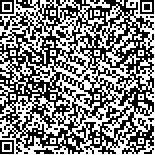本文已被:浏览 1397次 下载 422次
投稿时间:2018-06-12 修订日期:2018-06-29
投稿时间:2018-06-12 修订日期:2018-06-29
中文摘要: 为了解决单探头星敏感器三轴姿态精度不一致问题,提高数据更新率和实时性,提出了多探头分布式视场融合方法。该方法通过控制各探头等时间间隔曝光,将相邻时刻曝光的2个探头的观测星矢量信息进行时间配准、空间配准,之后进行视场融合并采用QUEST算法解算姿态。仿真试验表明,该方法可将光轴方向精度提高8~9倍,同时可将数据更新率提高3倍以上,从而提高了系统的实时性。
Abstract:In order to solve problems of that three-axis attitude accuracy is not consistent of single head star tracker, improve data updating rate and real-time performance, a distributed FOV-fusion algorithm based on multiple heads star tracker is proposed. The algorithm controls these heads work alternately on the equal time intervals, rectify the observation star vectors on the time and space of two heads working successively, after that fuse star vectors to acquire the attitude quaternion using QUEST algorithm. Finally, the simulation results show that the attitude accuracy of light-axis improved 8~9 times, the data updating rate improved at least 3 times as before, which made the real-time performance better.
文章编号:20180110 中图分类号: 文献标志码:A
基金项目:
| 作者 | 单位 | |
| 李新鹏 | 上海航天控制技术研究所·上海·201109 | xinpengl@126.com |
| 任平川 | 上海市空间智能控制实验室·上海·201109 上海航天控制技术研究所·上海·201109 | |
| 高原 | 上海市空间智能控制实验室·上海·201109 上海航天控制技术研究所·上海·201109 | |
| 杨宵 | 上海市空间智能控制实验室·上海·201109 上海航天控制技术研究所·上海·201109 |
引用文本:
李新鹏,任平川,高原,杨宵.多探头星敏感器分布式视场融合方法[J].飞控与探测,2018,1(1):71-76.
李新鹏,任平川,高原,杨宵.多探头星敏感器分布式视场融合方法[J].飞控与探测,2018,1(1):71-76.

